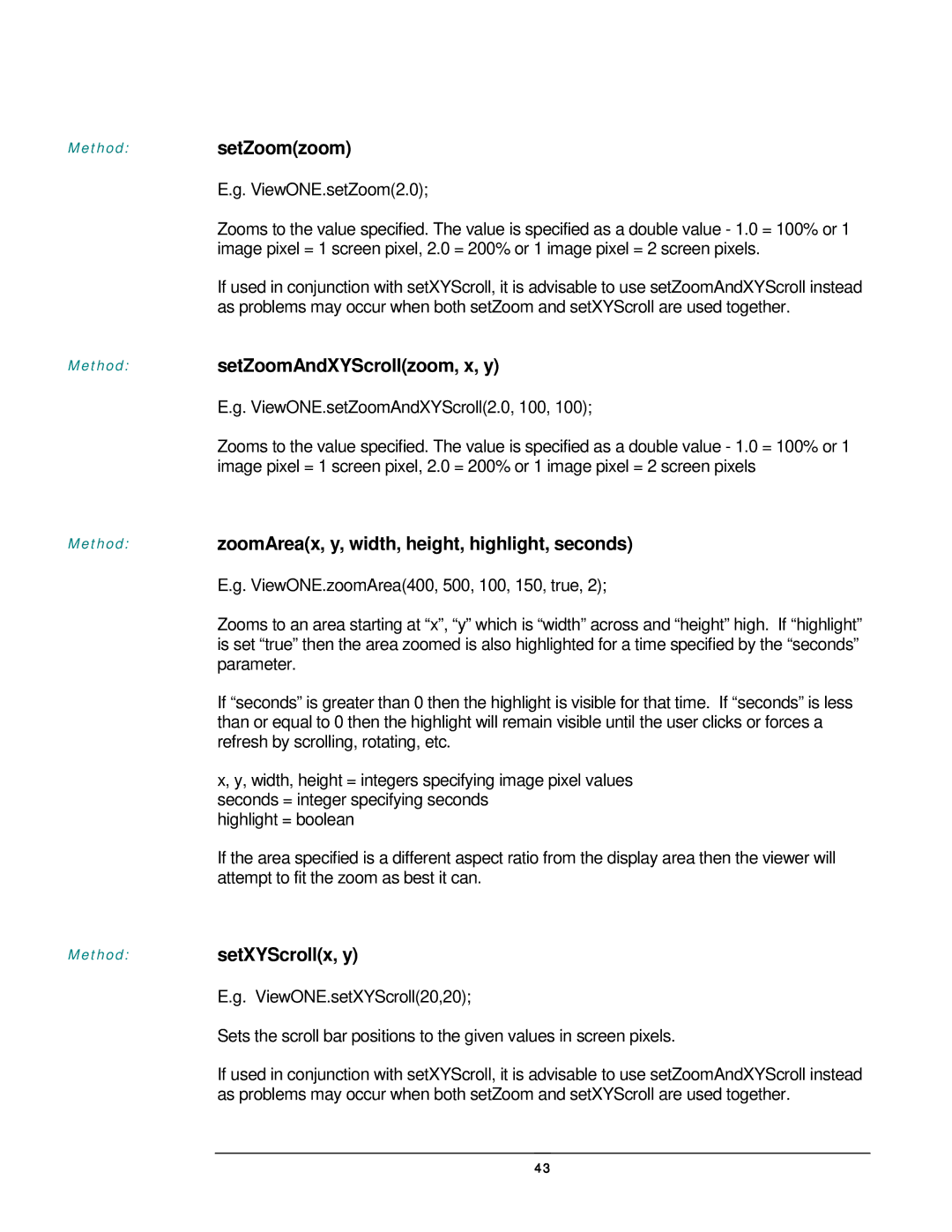Method: setZoom(zoom)
E.g. ViewONE.setZoom(2.0);
Zooms to the value specified. The value is specified as a double value - 1.0 = 100% or 1 image pixel = 1 screen pixel, 2.0 = 200% or 1 image pixel = 2 screen pixels.
If used in conjunction with setXYScroll, it is advisable to use setZoomAndXYScroll instead as problems may occur when both setZoom and setXYScroll are used together.
Method: setZoomAndXYScroll(zoom, x, y)
E.g. ViewONE.setZoomAndXYScroll(2.0, 100, 100);
Zooms to the value specified. The value is specified as a double value - 1.0 = 100% or 1 image pixel = 1 screen pixel, 2.0 = 200% or 1 image pixel = 2 screen pixels
Method: zoomArea(x, y, width, height, highlight, seconds)
E.g. ViewONE.zoomArea(400, 500, 100, 150, true, 2);
Zooms to an area starting at “x”, “y” which is “width” across and “height” high. If “highlight” is set “true” then the area zoomed is also highlighted for a time specified by the “seconds” parameter.
If “seconds” is greater than 0 then the highlight is visible for that time. If “seconds” is less than or equal to 0 then the highlight will remain visible until the user clicks or forces a refresh by scrolling, rotating, etc.
x, y, width, height = integers specifying image pixel values seconds = integer specifying seconds
highlight = boolean
If the area specified is a different aspect ratio from the display area then the viewer will attempt to fit the zoom as best it can.
Method: | setXYScroll(x, y) |
| E.g. ViewONE.setXYScroll(20,20); |
| Sets the scroll bar positions to the given values in screen pixels. |
| If used in conjunction with setXYScroll, it is advisable to use setZoomAndXYScroll instead |
| as problems may occur when both setZoom and setXYScroll are used together. |
|
|
| 43 |
